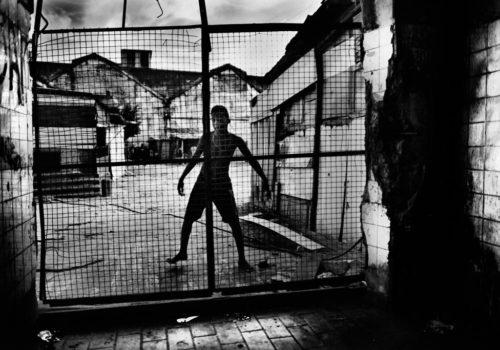Eight years ago sixty families occupied the “Galpao da Araujo Barreto”, an abandoned chocolate factory in Salvador de Bahia, Brazil. Prior to establishing in this place, these families lived throughout the dangerous streets of the city. In 2003, these families came together to seize this deserted factory, which lay in ruins, and they transformed it into a home.
Since 2009, I have been documenting Barreto. From my studies in sociology, I understood that this was a unique community. This vast sub culture within the greater city became one extended family. They created a microcosm in which the problems of drugs, prostitution and violence tackled with the support of the community.
Today, life in a community is a form of revolution. Barreto was a place where the exchange of ideas, goods and services created a bond of identity that allowed the survival of its members in a society that marginalizes them. Thus, community life is a form of struggle and resistance. Resistance to a society that considered they as a dysfunctional organ.
Two years ago I came to Barreto to explore how communities formed within fragmented societies as a mechanism of survival. During the years, I have witnessed almost everything that one can live: love, despair, betrayal, lust, passion, unity, friendships, empathy, internal and external conflicts, forgiveness and a sense of family.
Since my first visit in 2009, I continued to return several times by myself until March, 2011, when the government evicted these families from the factory, as one of the many attempts to clean up the visible poverty of the center of Brazilian cities. This is mainly due to the upcoming international events to be held in Brazil in the next years, like the 2014 World Cup and the 2016 Olympic Games. Brazil has begun to teeter on the brink of human rights violation as it continues with the displacement of favelas in a reckless manner.
By the time, these families relocated, there were around 130 families living in Barreto, an area approximately the size of a football field. Although Barreto, the physical place, no longer exists, the community remains. The families that once lived in Barreto now live together in the “Jardim das Margaridas”, a marginalized neighborhood on the outskirts of the city.
My main objective is to document the emotional and physical ties between the different families, how the community is managing their relationships and meanwhile, how they continue to build their dignity. This community is a metaphor for a place where the tragic decomposition of human life combines perfectly with the magic realism of Latin America.
Urban Quilombo – Sebastian Liste
Visa pour l’image – Perpignan
Evening shows – Campo Santo
















